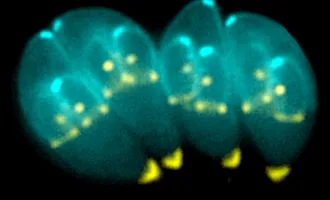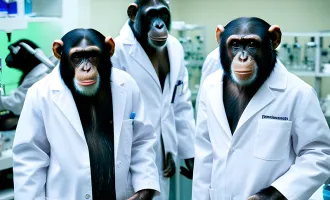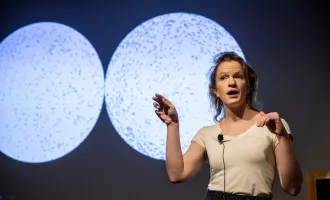Journal Club: Microbiology, Developmental Biology, and Physiology
MICROBIOLOGY: Comparative transcriptomics of infectious spores from the fungal pathogen Histoplasma capsulatum reveals a core set of transcripts that specify infectious and pathogenic states. Inglis, D.O.; Voorhies, M.; Hocking Murray, D.R.; Sil, A. Eukaryotic Cell. April 5 [epub ahead of print]
Fungi are really weird organisms with very complex lifecycles. Histoplasma capsulatum is a fungal pathogen that causes histoplasmosis, an opportunistic lung infection that can be fatal if untreated.
During its lifecycle in the soil, Histoplasma live as fibrous mycelia that produce asexual spores called conidia. If a person inhales the conidia, they become infected with Histoplasma, which transform in the host into yeast-like cells that can cause disease. Not surprisingly, a majority of the work done on Histoplasma has focused on the yeast-like form of the pathogen. However, significant questions remain about the conidia form, especially since this form represents the infectious stage of Histoplasma.
In this paper, researchers carefully purified conidia and extensively characterized them both in vivo (by infecting cells) and by gene expression analysis (by microarray) to compare them to the mycelial and yeast-like forms of the pathogen. By using this method, the researchers were able to identify groups of genes associated with the different forms of the fungus.
MICROBIOLOGY: Bartonella quintana deploys host and vector temperature-specific transcriptomes. Abromaitis, S. et al. (Koehler). PLoS One. 8(3):e58773.
In World War I, over a million soldiers (from numerous countries) contracted “trench fever,” a disease carried by body lice and characterized by a high, relapsing fever that was rarely fatal.
Trench fever is caused by the bacterium Bartonella quintana, which lives within the stomachs of body lice and can infect humans when the feces of the lice come in contact with abrasions or open wounds. Given how different a louse and human host are, it seems likely that many genes are differentially expressed in one host or the other.
In this paper, scientists used a new approach to do whole-genome microarray analysis of Bartonella in a human host (simulated by incubation at 37 degrees) or a louse host (simulated by incubation at 28 degrees). Then, they compared gene expression profiles between the two growth conditions. Interestingly, they found that 5 percent of the genome was temperature-sensitive, indicating that the expression of these genes is influenced by the type of host it resides in.
DEVELOPMENTAL BIOLOGY: Transcriptional corepressors HIPK1 and HIPK2 control angiogenesis via TGF-β-TAK1-dependent mechanism. Shang, Y. et al. (Huang). PLoS Biology. 11(4):e1001527.
The generation of blood vessels, or angiogenesis, is critical to several body processes, including development of the embryo, wound-healing and cancer.
For each of these very different processes, the same general steps must happen. First, endothelial precursors must aggregate to where vasculature is needed. Then, they must proliferate, differentiate into endothelial cells, migrate to the exact location of the newly forming vessel, and finally come together to form a functional vessel.
It is known that many of these steps require the cytokine TGF-beta in order to coordinate cell movement and development, but the mechanism of its signaling is poorly understood. Here, researchers describe how the kinases HIPK1 and HIPK2 negatively regulate TGF-beta signaling and prevent improper blood vessel formation. Without HIPK1/2, the researchers saw overproliferation of endothelial cells and poor formation of vessels.
PHYSIOLOGY: Constitutive Protein Kinase A activity in osteocytes and late osteoblasts produces an anabolic effect on bone. Kao, R.S. et al. (Nissenson). Bone. April 10 [epub ahead of print]
Osteocytes, which are distinct from osteoclasts and osteoblasts, are small, nonmigratory, nondividing cells that reside in the bone and regulate bone density by coordinating osteoblast and osteoclast activity. More specific understanding is lacking, but it is thought that the regulation of osteocyte function occurs through cAMP signaling.
In this paper, researchers hypothesized that cAMP signaling through protein kinase A (“PKA,” a kinase important for many signaling pathways) was responsible for bone formation (or anabolism). Therefore, they hypothesized that if PKA was always on in osteocytes, bones would become extra-strong.
To test this hypothesis, they generated an animal model where PKA was always on, only in osteocytes, to minimize off-target effects. By using this model, they found that when PKA was always activated, there were higher levels of bone formation.


